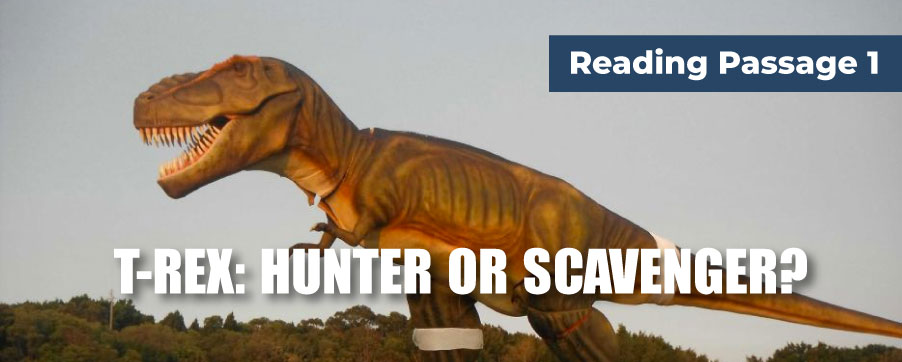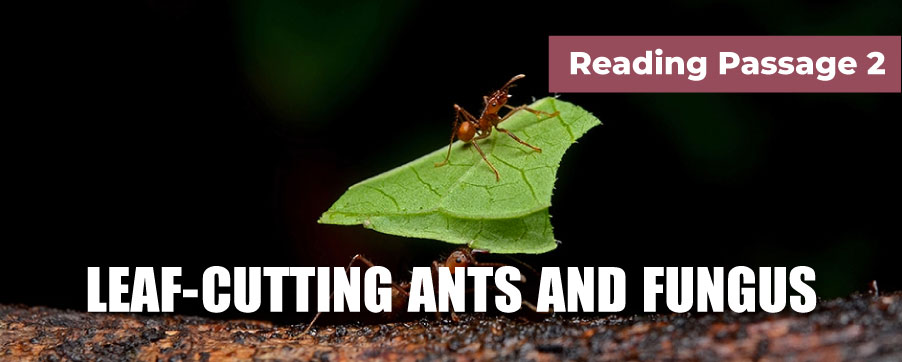
IELTS Recent Mock Tests Volume 4
- Published on: 29 Nov 2017
- Tests taken: 1,174,568
Answer Keys:
Part 1: Question 1 - 13
- 1 TRUE
- 2 FALSE
- 3 TRUE
- 4 NOT GIVEN
- 5 TRUE
- 6 FALSE
- 7 NOT GIVEN
- 8 shin bone
- 9 slow walker
- 10 cheetah
- 11 run fast
- 12 blunt
- 13 (only) crush
- 1 TRUE
- 2 FALSE
- 3 TRUE
- 4 NOT GIVEN
- 5 TRUE
- 6 FALSE
- 7 NOT GIVEN
- 8 shin bone
- 9 slow walker
- 10 cheetah
- 11 run fast
- 12 blunt
- 13 (only) crush
Part 2: Question 14 - 26
- 14 A
- 15 B
- 16 B
- 17 A
- 18 A
- 19 C
- 20 F
- 21 D
- 22 C
- 23 J
- 24 G
- 25 A
- 26 C
- 14 A
- 15 B
- 16 B
- 17 A
- 18 A
- 19 C
- 20 F
- 21 D
- 22 C
- 23 J
- 24 G
- 25 A
- 26 C
Part 3: Question 27 - 40
- 27 E
- 28 D
- 29 C
- 30 B
- 31 G
- 32 F
- 33 F
- 34 E
- 35 D
- 36 A
- 37 chickens
- 38 adenovirus/AD-36
- 39 Gene
- 40 Vaccine
- 27 E
- 28 D
- 29 C
- 30 B
- 31 G
- 32 F
- 33 F
- 34 E
- 35 D
- 36 A
- 37 chickens
- 38 adenovirus/AD-36
- 39 Gene
- 40 Vaccine
Leaderboard:
| # | User | Score | Time | |
|---|---|---|---|---|
| Madison Wilson |  | 9.0 | 15:08 | |
| Nothando Sibanda |  | 9.0 | 16:17 | |
| thuan vu |  | 9.0 | 17:40 | |
| 4 | Khanh Nam |  | 9.0 | 17:46 |
| 5 | Israt Jahan Nishe |  | 9.0 | 18:32 |
| 6 | Amandeep Kaur |  | 9.0 | 19:26 |
| 7 | phat ngo |  | 9.0 | 19:36 |
| 8 | Nhi Tran |  | 9.0 | 20:47 |
| 9 | Nguyen Minh Phong |  | 9.0 | 21:06 |
| 10 | Ekaterina Soboleva |  | 9.0 | 22:51 |
Review & Explanations:
Questions 1-7
Do the following statements agree with the information given in Reading Passage 1?
In boxes 1-7 on your answer sheet, write
| TRUE | if the statement agrees with the information |
| FALSE | if the statement contradicts the information |
| NOT GIVEN | If there is no information on this |
- 1 Answer: TRUE
Keywords in Questions
Similar words in Passage
Q1: Jack Horner knew exactly the bone picked up in his father’s ranch belonged to a certain dinosaur when he was at the age of 8.
So when I was eight years old he took me back to the area that had been his ranch, to where he had seen these big old bones. I picked up one. I am pretty sure it was the upper arm bone of a duckbilled dinosaur
Note: The question matches all the key information in the passage so the answer is TRUE
- 2 Answer: FALSE
- 3 Answer: TRUE
Keywords in Questions
Similar words in Passage
Q3: Jack Horner believes that the number of prey should be more than that of predators.
Triceratops is very common: they are the cows of the Cretaceous, they are everywhere. Duckbilled dinosaurs are relatively common but not as common as triceratops and T-rex, for a meat-eating dinosaur, is very common. What we would consider the predator-prey ratio seems really off the scale.
In the passage the prey and predator are both very common. “Off the scale” means “exceed normal” hence in normal situation the number of prey should be more than that of predators. Therefore, the answer is TRUE.
- 4 Answer: NOT GIVEN
Keywords in Questions
Similar words in Passage
Q4: T-rex’s number is equivalent to the number of vulture in the Serengeti.
That is why he sees T-rex not as the lion of the Cretaceous savannah but its vulture. “Look at the wildebeest that migrate in the Serengeti of Africa, a million individuals lose about 200,000 individuals in that annual migration. There is a tremendous carrion base there. And so you have hyenas, you have tremendous numbers of vultures that are scavenging, you don’t have all that many animals that are good predators
There is neither information about the number of T-rex nor the number of vulture in the Serengeti.
There is a misleading statement: “Look at the wildebeest that migrate in the Serengeti of Africa, a million individuals lose about 200,000 individuals in that annual migration”, so the answer is NOT GIVEN. - 5 Answer: TRUE
Keywords in Questions
Similar words in Passage
Q5: The hypothesis that T-rex is top predator conflicts with the fact of predator-prey ratio which Jack found.
"If T-rex was a top predator, especially considering how big it is, you’d expect it to be extremely rare, much rarer than the little dromaeosaurs, and yet they are everywhere, they are a dime a dozen", he says.
+ "to conflict" means "to be different or opposed".
+ Considering the above text, it could be inferred that the question is confirmed in the passage, so the answer is TRUE.
- 6 Answer: FALSE
Keywords in Questions
Similar words in Passage
Q6: Jack Horner refused to accept any other viewpoints about T-rex’s theory.
He insisted his theory and finding, dedicated to further research upon it, of course, he would like to reevaluate if there is any case that additional evidence found or explanation raised by others in the future.
Note: “Reevaluate" contradicts “refused to accept”, so the answer is FALSE.
- 7 Answer: NOT GIVEN
Keywords in Questions
Similar words in Passage
Q7: Jack Horner is the first man that discovered T-rex’s bones in the world.
He examined the leg bones of the T-rex, and compared the length of the thigh bone (upper leg), to the shin bone (lower leg).
Note: There is a misleading information refer to Jack “examined the bones of the T-rex” but no information about to determine if Jack is the first man that discover the T-rex’s bone. Hence the answer is NOT GIVEN.
Questions 8-13
- 8 Answer: shin bone
Keywords in Questions
Similar words in Passage
Q8: Jack Horner found that T-rex’s __________ is shorter than the thigh bone
He found that the thigh bone was equal in length or slightly longer than the shin bone, and much thicker and heavier, which proves that the animal was built to be a slow walker rather than fast running.
+ From the question, we can assume that the answer must be a Noun.
+ Comparison: something is shorter than the thigh bone is equal to something is longer than the thigh bone. Therefore the answer is “shin bone”.
- 9 Answer: slow walker
Keywords in Questions
Similar words in Passage
Q9: which demonstrated that it was actually a __________
He found that the thigh bone was equal in length or slightly longer than the shin bone, and much thicker and heavier, which proves that the animal was built to be a slow walker rather than fast running.
+ From the question, we can assume that the answer must be a Noun.
+The answer is obviously “slow walker”.
- 10 Answer: cheetah
Keywords in Questions
Similar words in Passage
Q11: that was built to __________
This same truth can be observed in many animals of today which are designed to run fast: the ostrich, cheetah, etc.
Note: The phrase “which are designed to” in the passage is paraphrased to “that was built to” in the question. Hence the answer is “run fast”.
- 11 Answer: run fast
- 12 Answer: blunt
Keywords in Questions
Similar words in Passage
Q12: Another explanation support his idea is that T-rex’s teeth were rather __________
The T-rex’s teeth were huge, sharp at their tip, but blunt, propelled by enormous jaw muscles, which enabled them to only crush bones.
+ From the question, we can assume that the answer must be an adjective.
+ Here we have 2 choices: “blunt” or “sharp at their tip”. Since we can put no more than 3 words/number in the answer, the latter is not the correct answer.
Moreover if you read both Q12 and Q13, it’s obvious that T-rex use it’s blunt teeth to crush bones. Hence the answer is “blunt”.
- 13 Answer: (only) crush
Keywords in Questions
Similar words in Passage
Q13: which only allowed T-rex to __________ hard bones instead of tearing flesh like Velociraptor
The T-rex’s teeth were huge, sharp at their tip, but blunt, propelled by enormous jaw muscles, which enabled them to only crush bones.
+ From the question, we can assume that the answer must be a verb.
+ The answer is an action that the T-rex can only do to bones. Hence the answer is “crush”.
READING PASSAGE 1
You should spend about 20 minutes on Questions 1-13, which are based on Reading Passage 1 below.

T-Rex: Hunter or Scavenger?
Jack Homer is an unlikely academic: his dyslexia is so bad that he has trouble reading a book. But he can read the imprint of life in sandstone or muddy shale across a distance of l00 years, and it is this gift that has made him curator of palaeontology at Montana State University’s Museum of the Rockies, the leader of a multi-million dollar scientific project to expose a complete slice of life 68 million years ago, and a consultant to Steven Spielberg and other Hollywood figures.
His father had a sand and gravel quarry in Montana, and the young Horner was a collector of stones and bones, complete with notes about when and where he found them. “My father had owned a ranch when he was younger, in Montana,” he says. “He was enough of a geologist, being a sand and gravel man, to have a pretty good notion that they were dinosaur bones. So when I was eight years old he took me back to the area that had been his ranch, to where he had seen these big old bones. I picked up one. I am pretty sure it was the upper arm bone of a duckbilled dinosaur: it probably wasn’t a duckbilled dinosaur but closely related to that. I catalogued it, and took good care of it, and then later when I was in high school; excavated my first dinosaur skeleton. It obviously started earlier than eight and I literally have been driven ever since. I feel like I was born this way.”
Horner spent seven years at university, but never graduated. “I have a learning disability, I would call it a learning difference - dyslexia, they call it - and I just had a terrible time with English and foreign languages and things like that. For a degree in geology or biology they required two years of a foreign language. There was no way in the world I could do that. In fact, I didn’t really pass English. So I couldn’t get a degree, I just wasn’t capable of it. But I took all of the courses required and I wrote a thesis and I did all sorts of things. So I have the education, I just don’t have the piece of paper,” he says.
“We definitely know we are working on a very broad coastal plain with the streams and rivers bordered by conifers and hardwood plants, and the areas in between these rivers were probably fern-covered. There were no grasses at all: just ferns and bushes -an unusual landscape, kind of taking the south-eastern United States - Georgia, Florida - and mixing it with the moors of England and flattening it out,” he says. “Triceratops is very common: they are the cows of the Cretaceous, they are everywhere. Duckbilled dinosaurs are relatively common but not as common as triceratops and T-rex, for a meat-eating dinosaur, is very common. What we would consider the predator-prey ratio seems really off the scale. What is interesting is the little dromaeosaurs, the ones we know for sure were good predators, are haven’t been found.”
That is why he sees T-rex not as the lion of the Cretaceous savannah but its vulture. “Look at the wildebeest that migrate in the Serengeti of Africa, a million individuals lose about 200,000 individuals in that annual migration. There is a tremendous carrion base there. And so you have hyenas, you have tremendous numbers of vultures that are scavenging, you don’t have all that many animals that are good predators. If T-rex was a top predator, especially considering how big it is, you’d expect it to be extremely rare, much rarer than the little dromaeosaurs, and yet they are everywhere, they are a dime a dozen,” he says. A 12-tonne T-rex is a lot of vulture, but he doesn’t see the monster as clumsy. He insisted his theory and finding, dedicated to further research upon it, of course, he would like to reevaluate if there is any case that additional evidence found or explanation raised by others in the future.
He examined the leg bones of the T-rex, and compared the length of the thigh bone (upper leg), to the shin bone (lower leg). He found that the thigh bone was equal in length or slightly longer than the shin bone, and much thicker and heavier, which proves that the animal was built to be a slow walker rather than fast running. On the other hand, the fossils of fast hunting dinosaurs always showed that the shin bone was longer than the thigh bone. This same truth can be observed in many animals of today which are designed to run fast: the ostrich, cheetah, etc.
He also studied the fossil teeth of the T-rex, and compared them with the teeth of the Velociraptor, and put the nail in the coffin of the “hunter T-rex theory”. The Velociraptor’s teeth which like stake knives: sharp, razor-edged, and capable of tearing through flesh with ease. The T-rex’s teeth were huge, sharp at their tip, but blunt, propelled by enormous jaw muscles, which enabled them to only crush bones.
With the evidence presented in his documentary, Horner was able to prove that the idea of the T-rex as being a hunting and ruthless killing machine is probably just a myth. In light of the scientific clues he was able to unearth, the T-rex was a slow, sluggish animal which had poor vision, an extraordinary sense of smell, that often reached its “prey” after the real hunters were done feeding, and sometimes it had to scare the hunters away from a corpse. In order to do that, the T-rex had to have been ugly, nasty-looking, and stinky. This is actually true of nearly all scavenger animals. They are usually vile and nasty looking.
-------------------------------------------
Great thanks to volunteer Uc Bu who has contributed these explanations and markings.
If you want to make a better world like this, please contact hi@ieltsonlinetests.com






